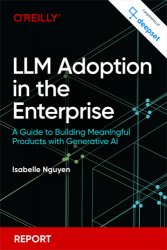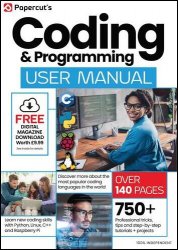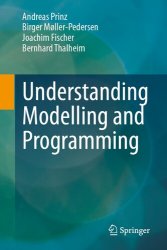 Название: LLM Adoption in the Enterprise: A Guide to Building Meaningful Products with Generative AI
Название: LLM Adoption in the Enterprise: A Guide to Building Meaningful Products with Generative AIАвтор: Isabelle Nguyen
Издательство: O’Reilly Media, Inc.
Год: 2024-03-27
Язык: английский
Формат: pdf, azw3, epub, mobi
Размер: 10.1 MB
Using large language models (LLMs) as an example, this concise guide illustrates how enterprises should approach the introduction of generative AI into their business models. From a practical understanding of the technology, to efficient and dynamic cross-functional product teams, to agile product lifecycles: packed with real-world examples, this report aims to equip thought leaders with a readily applicable framework for building with AI.
Tailored copy written by a chatbot, automated code reviews, and a fully AI-driven yet empathetic and helpful customer support. The potential of large language models (LLMs) to increase productivity and drive return on investment (ROI) seems too good to be true. But this disruptive technology also presents a challenge that goes beyond cost and technical know-how. To bring an LLM-based application to production, product leaders need a pragmatic understanding of the technology, the business outcomes it can drive, and the skills required to bring their product idea to life. They must be able to lead diverse teams through the adoption process and respond to new challenges as they arise. By learning to overcome their initial awe of a new and groundbreaking technology, product leads can begin to embrace the potential of LLMs to address their users’ pain points. In this way, LLMs become a powerful addition to the product team’s toolbox that, when used properly, can solve a variety of text-based problems.
In the most common understanding of the term, LLMs are language models with billions of parameters that excel at generating text in natural language. To ensure that they learn to capture an accurate representation of the world, LLMs are trained on vast collections of textual data. In addition, it is becoming increasingly common to find multimodal models that can process and generate both text and images—for example, they can be used to create captions for diagrams. This is a natural consequence of the fact that the technology behind LLMs is also very good at processing visual input. The technology underlying LLMs also excels at processing visual input, so they can be successfully applied to text and images simultaneously, as seen in models like GPT-4 and Gemini. By looking at terabytes of data from the web and other sources, LLMs use their many parameters to learn linguistic patterns, as well as factual information and correlative relationships across a wide range of topics. They can then use these representations to perform complex tasks, like writing valid code in any programming language, generating image captions, and composing prose in the style of a particular author from scratch. These abilities—known as “emergent properties,” because they were not literally present in the training data—arise from the LLM’s ability to apply the patterns it has learned to new domains. For many people, they are the most impressive feature of these language models.
Contents:
Скачать LLM Adoption in the Enterprise
[related-news] [/related-news]
Комментарии 0
Комментариев пока нет. Стань первым!
















